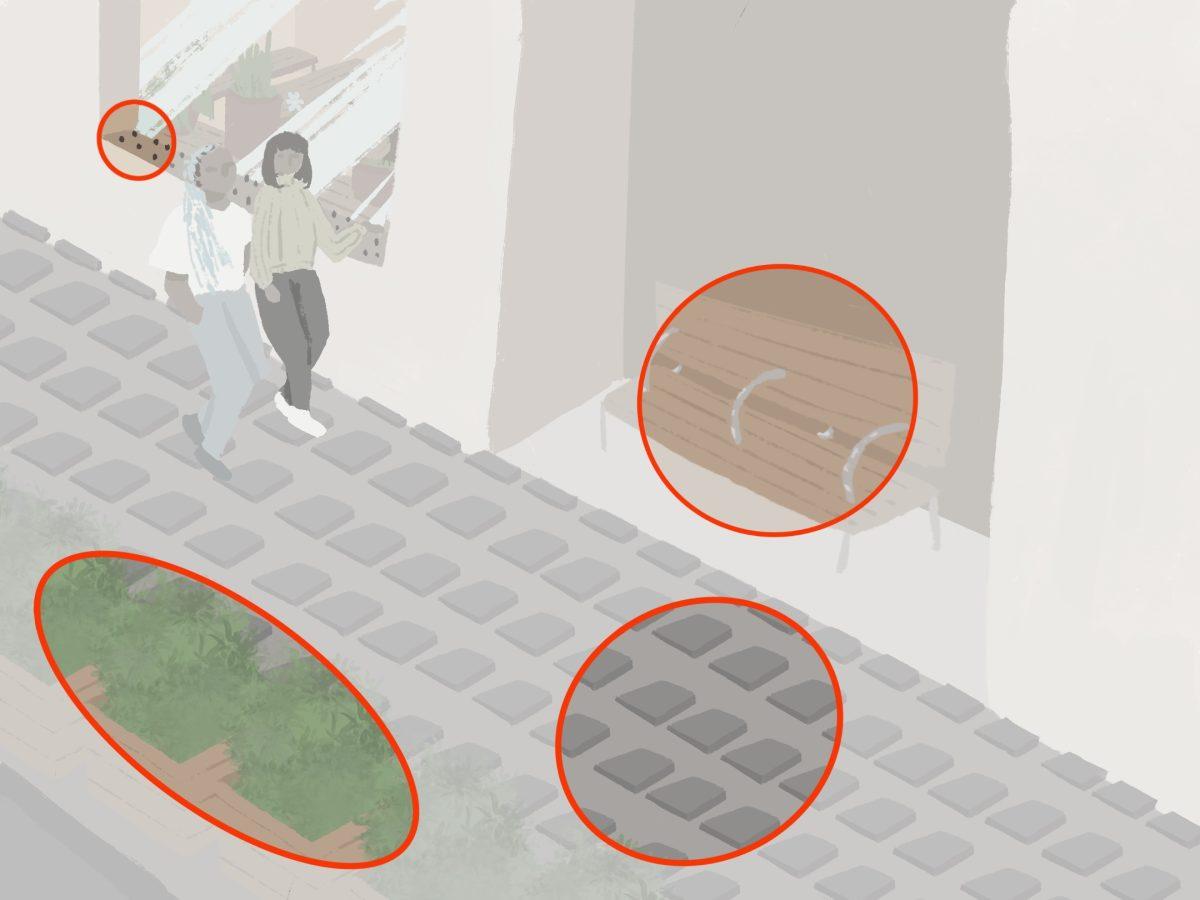Casual remarks made in passing can have profound effects on how we view the world, and they simultaneously speak volumes about our privilege. Based on the rising homelessness rate, many feel tempted to blame the people themselves. However, taking a deep dive into anti-homeless infrastructure and policies can reveal this true villains of the story.
Anti-homeless infrastructure refers to a range of architectural and urban design elements intentionally employed by cities to discourage or displace homeless individuals from public spaces, which garnered significant attention and criticism due to their perceived inhumanity.
One of the most common forms of anti-homeless infrastructure is the installation of “hostile architecture.” This term encompasses various design features intended to deter homeless people from sleeping or loitering in public spaces, such as benches with dividers or armrests that prevent lying down, spikes on ledges, and sloped surfaces that discourage sitting or sleeping. While proponents argue that these measures enhance the aesthetic appeal of public spaces and discourage anti-social behavior, critics contend that they exacerbate the already dire conditions faced by those without shelter.
The consequences of anti-homeless infrastructure are multifaceted. Firstly, these measures perpetuate the cycle of homelessness. By prohibiting homeless individuals access to public spaces, cities are forcing them into even more precarious and marginalized situations. They may be pushed into unsafe areas, become more susceptible to exploitation, or struggle to find shelter. This lack of stability hinders their ability to address the root causes of their homelessness, such as mental illness, addiction, or unemployment, perpetuating the problem.
Furthermore, these cruel designs fail to address the underlying issues of homelessness. Rather than investing in affordable housing, mental health services, and addiction treatment programs, cities often allocate resources to deter homeless individuals from public spaces. This approach not only proves ineffective but also diverts funds from long-term solutions, making it a short-sighted and an inhumane response to a complex social issue.
Anti-homeless infrastructure deshumanizes homeless individuals, sending a clear message that they are unwelcome and invisible in public spaces. Such policies strip them of their dignity and exacerbate the stigma associated with homelessness, instead of fostering empathy and change, or other word for action.
Moreover, these policies raise ethical concerns. The Universal Declaration of Human Rights, adopted by the United Nations in 1948, recognizes housing as a fundamental human right. Anti-homeless infrastructure infringes upon this right by denying individuals the basic necessity of shelter, highlighting the stark contrast between the ideal of human rights and the reality faced by many.
It is essential to acknowledge that homelessness is a complex issue with no all-encompassing solution. Homeless individuals come from diverse backgrounds and face various challenges. A compassionate and effective response needs to address the underlying causes of homelessness.
In contrast to anti-homeless infrastructure, Housing First programs have demonstrated success. This approach prioritizes providing stable housing to homeless individuals without preconditions, such as sobriety or employment. It recognizes that having a safe and stable place to live is a crucial first step in addressing other issues that may contribute to homelessness.
The adoption of a human rights-based approach to homelessness can also inform policies and practices that respect the dignity and rights of homeless individuals. This approach recognizes housing as a fundamental human right and emphasizes the importance of non-discrimination, participation, and accountability in addressing homelessness.
Anti-homeless infrastructure represents a troubling response to the complex issue of homelessness. These policies and design elements not only fail to address the root causes of homelessness but also perpetuate cycles of poverty and despair. They send a dehumanizing message to homeless individuals and raise ethical concerns about the violation of their fundamental human rights. Instead of investing in punitive measures, cities should prioritize compassionate and effective solutions, such as Housing First programs and human rights-based approaches, to address homelessness and provide support to those in need. It is only through a concerted effort to address the underlying causes of homelessness that we can create more just and humane societies.















































































